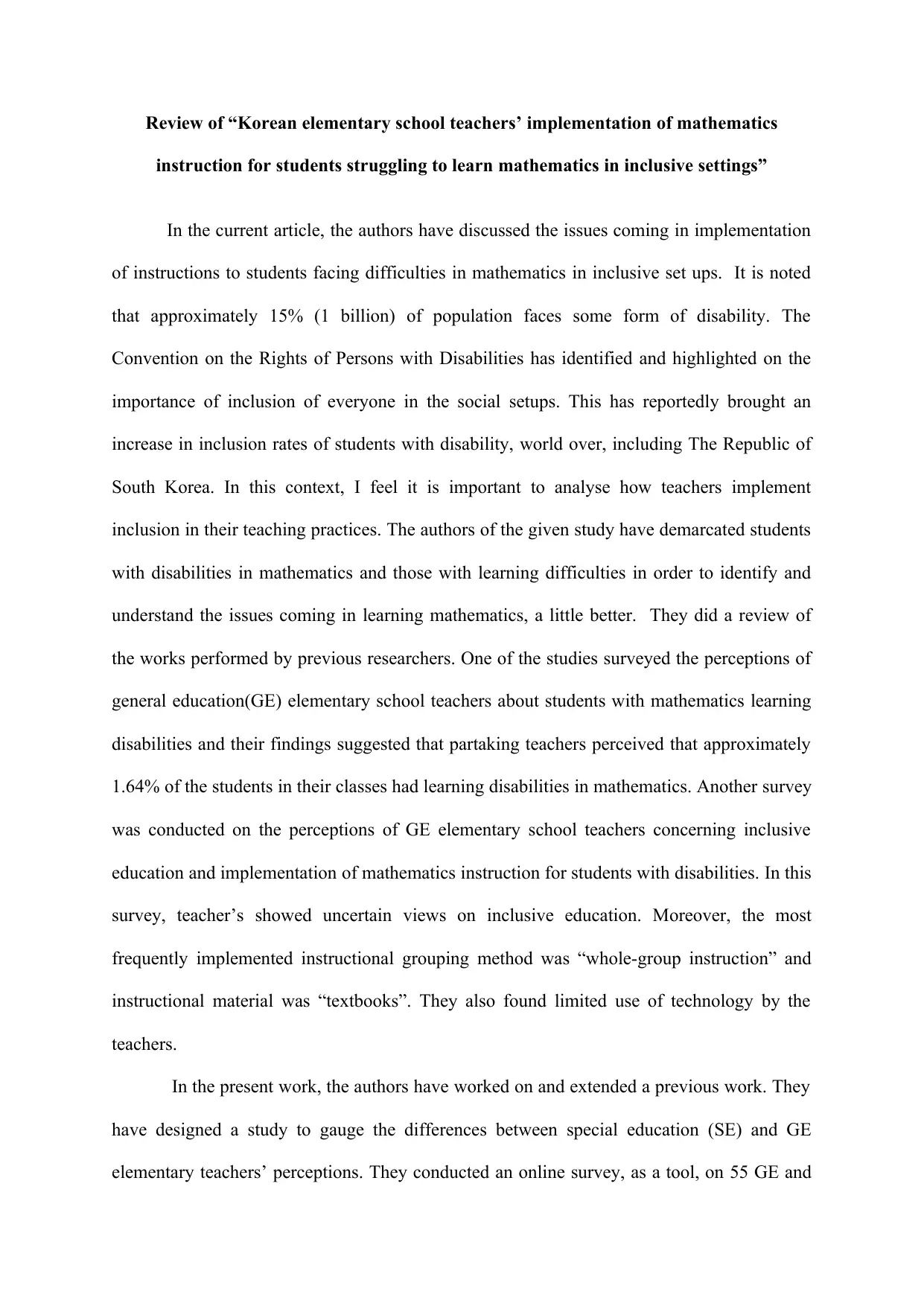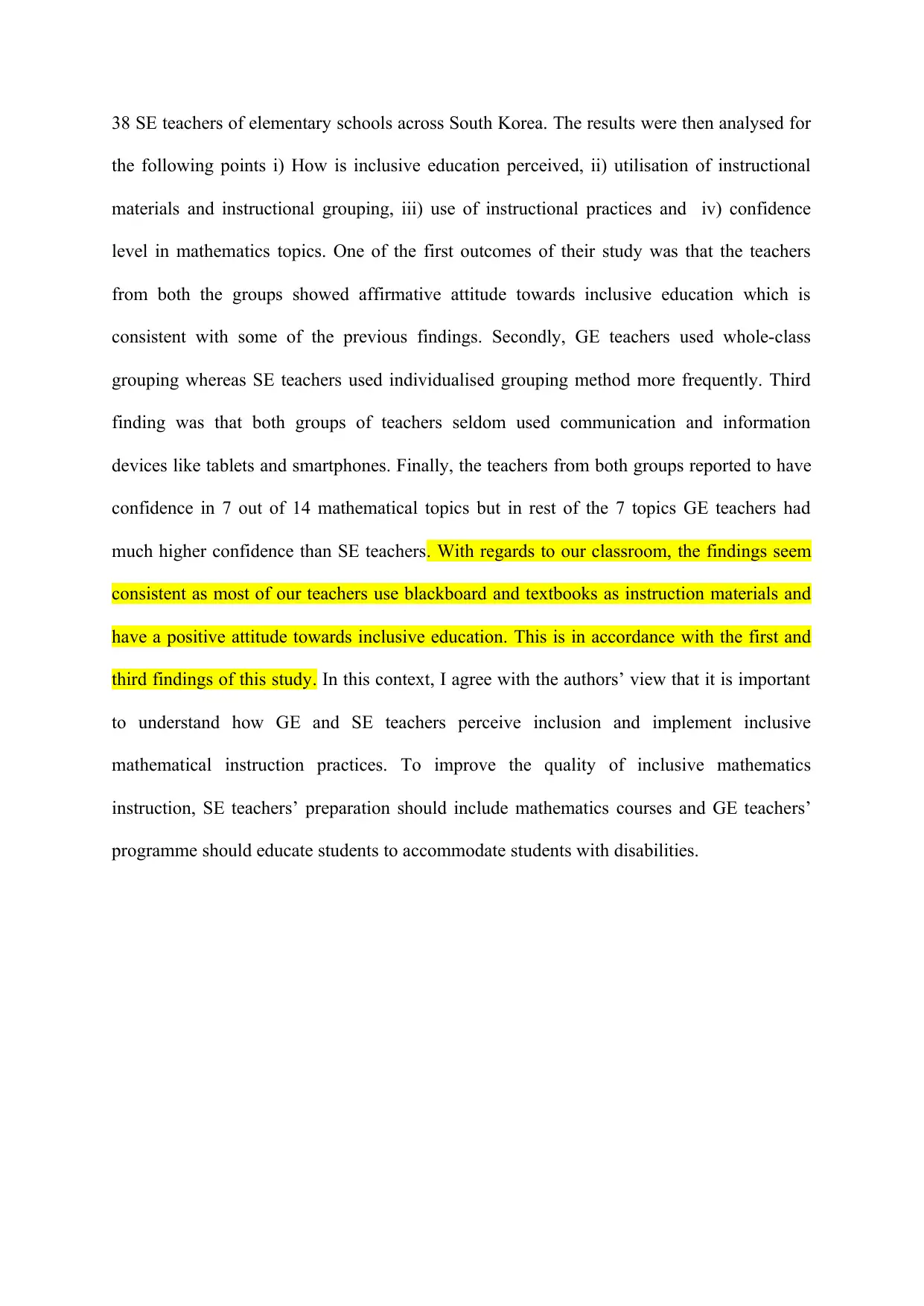Analysis of Mathematics Instruction in Inclusive Settings: A Report
VerifiedAdded on 2022/08/10
|2
|616
|23
Report
AI Summary
This report reviews the study on Korean elementary school teachers' implementation of mathematics instruction in inclusive settings, focusing on students with learning difficulties. The review analyzes the perceptions of general education (GE) and special education (SE) teachers regarding inclusive education, instructional materials, grouping methods, and confidence levels in various mathematical topics. The study, conducted through online surveys, reveals that both GE and SE teachers generally support inclusive education. However, GE teachers primarily use whole-class grouping and textbooks, while SE teachers employ individualized methods. Both groups show limited use of technology. GE teachers express higher confidence in some mathematical topics compared to SE teachers. The report connects these findings to classroom practices, emphasizing the importance of understanding teacher perspectives and implementing inclusive mathematical instruction. The report concludes by suggesting improvements in teacher training programs to enhance the quality of inclusive mathematics instruction.
1 out of 2








![[object Object]](/_next/static/media/star-bottom.7253800d.svg)